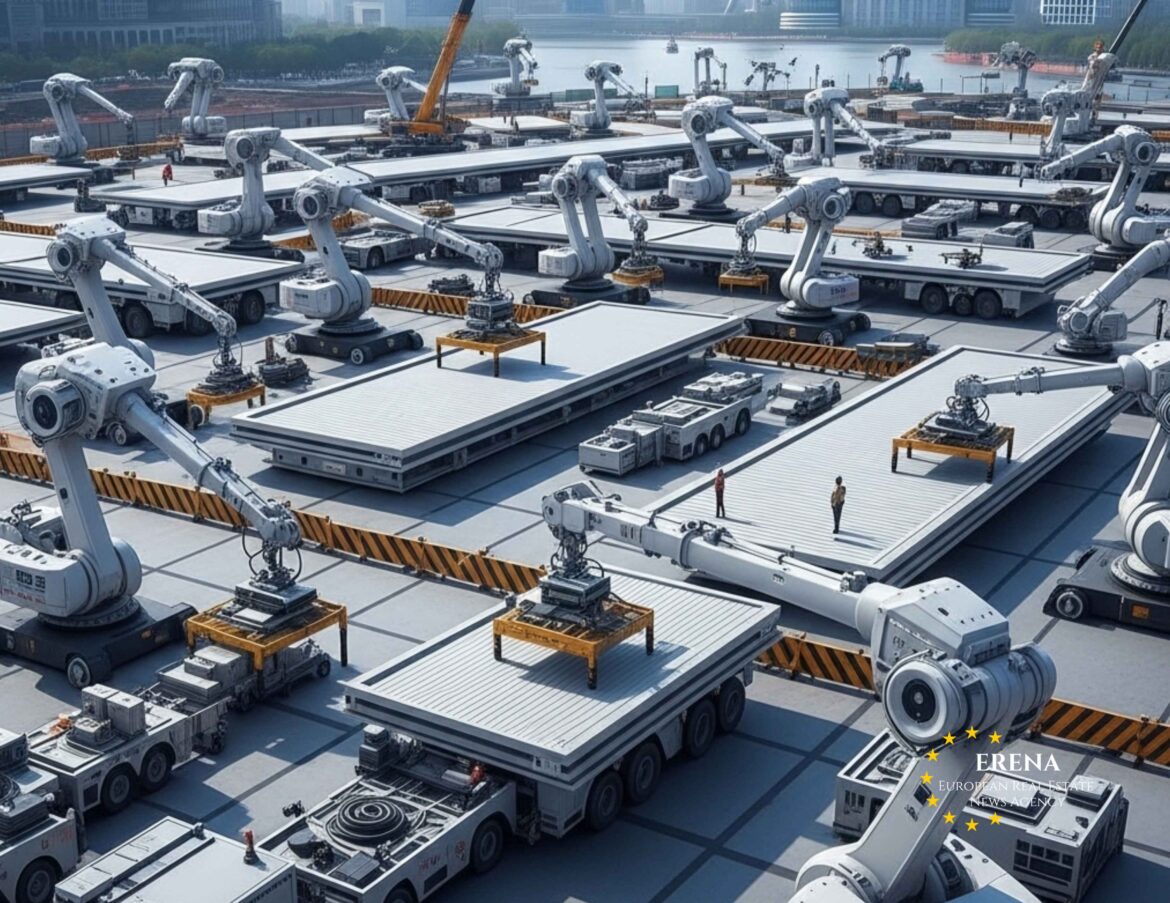In a historic first, Shanghai has successfully relocated an entire neighborhood using 432 synchronized robots to make way for a new metro tunnel. The operation, which took two weeks, involved shifting buildings weighing up to 7,500 tons, then returning them to their original positions once excavation was complete. The feat sets a global precedent for urban innovation and heritage preservation.
Why Move an Entire District?
The operation took place in Minhang District, where city authorities planned a key extension of the Shanghai metro system. However, the proposed tunnel passed directly under a cluster of residential buildings. Rather than demolish them—an expensive and politically sensitive solution—engineers proposed something bolder: physically moving the buildings out of the way and returning them afterward.
This innovative approach allowed the city to preserve existing homes, reduce construction delays, and avoid displacing hundreds of residents.
How It Worked: Robotics in Action
A total of 432 mobile robotic platforms were deployed beneath the targeted buildings. Each platform was equipped with hydraulic legs and stabilization sensors capable of lifting, tilting, and shifting portions of the structure with millimeter precision. The robots acted in unison, moving forward just a few centimeters at a time—about 10 synchronized “steps” each day.
The largest structure moved weighed 7,500 tons, and every shift required real-time data analysis on load distribution, vibration, and soil integrity. Engineers used AI software to coordinate the robots’ timing, automatically adjusting movements to accommodate minor changes in terrain or structural resistance.
The precision involved was extraordinary: despite the buildings being lifted and relocated, their return positions differed from the original by no more than a few millimeters.
A Two-Week Urban Ballet
The robotic relocation lasted 14 days. Once the buildings were safely moved aside, tunnel boring machines began work beneath them. When underground excavation was completed, the robots reversed the process—bringing the buildings back, step by step.
Residents were temporarily relocated during the operation and returned once safety checks and utility reconnections were completed. Local media described the process as “a futuristic dance of steel and code,” and social media users marveled at video clips of the buildings seemingly “walking” through the city.
A Step Forward for Smart Cities
This was not Shanghai’s first experience with robotic relocation. In 2020, a 90-year-old school was moved 62 meters using similar technology. However, this project—due to its scale, number of buildings, and complexity—is the largest of its kind globally.
The Minhang relocation is being hailed as a model for how megacities can expand without sacrificing historical architecture or community stability. As urban areas become denser and infrastructure projects more urgent, such solutions are becoming increasingly relevant.
Why Not Just Demolish?
Demolition would have required more than a year of planning, compensation negotiations, and costly rebuilding efforts. It would also have permanently erased part of the district’s architectural landscape. By choosing relocation over destruction, the city not only saved time and money—it preserved its heritage.
In economic terms, the relocation added an estimated ¥180 million (about €23 million) to the metro budget. But city officials argue that the savings in social cost, disruption, and long-term infrastructure delays justify the expense.
Global Interest
Urban planners from Tokyo, London, and São Paulo have expressed interest in learning from the Shanghai model. Cities with aging infrastructure and limited available land could especially benefit from such technologies.
Potential future applications include:
- Temporary relocation for flood protection projects
- Realignment of buildings for road or bridge expansion
- Seismic safety retrofitting without disrupting occupancy
- Preservation of historic architecture during modernization
Chinese robotics firms involved in the project have reportedly received inquiries from European and Middle Eastern governments regarding licensing the technology.
Engineering the Future
The success of this project highlights the growing role of automation in civil engineering. As artificial intelligence, sensor networks, and robotic platforms become more sophisticated, the ability to conduct large-scale urban alterations without long-term disruption is becoming a reality.
This represents a paradigm shift. Where once the rule was: “if it stands in the way, knock it down,” the new model is: “move it, preserve it, then build around it.”
A New Urban Philosophy
Shanghai’s robotic relocation is more than a technical achievement—it reflects a changing mindset in urban development. It shows that preservation and progress do not have to be in conflict. With the right investment in technology and planning, cities can grow without erasing what came before.
In a time when many global cities struggle to balance modern growth with historical identity, Shanghai offers a bold example: move forward—but take the past with you.

